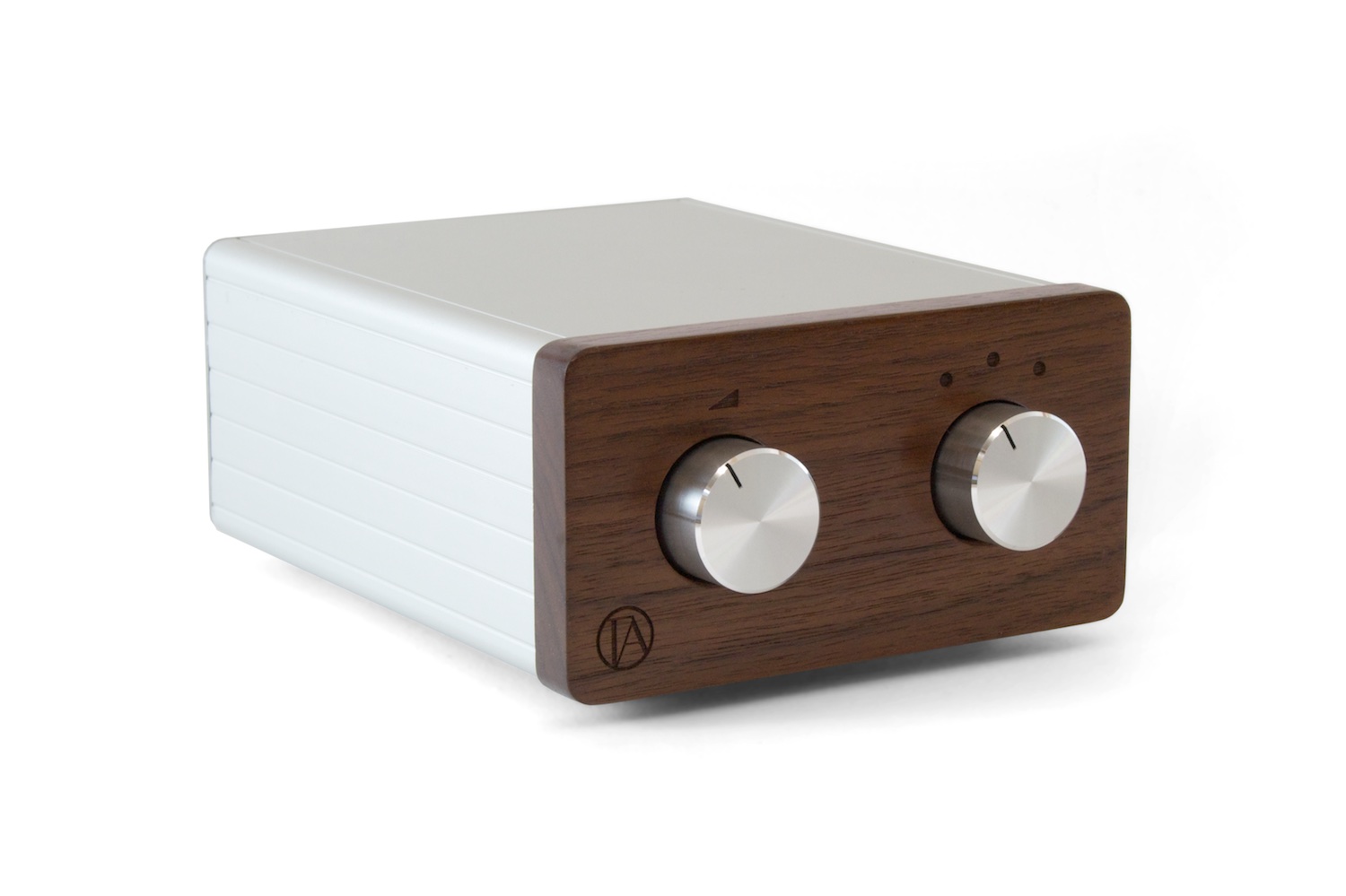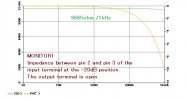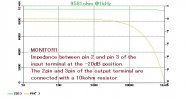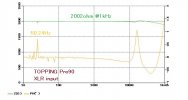Is there a way you could measure impedances at, say, -20dB ?
No need to measure. It's simple math.
For a 10k potmeter set at -20dB the input resistance is between 9.9k and 9.99k (depending on the load) and the output resistance = 900ohm.
For a 50k potmeter set at -20dB the input resistance is between 48k and 49k (depending on the load) and the output resistance = 4.5k.
This is somewhere around 30% of the volume control range.
Actually the 'worst' effect is achieved at -6dB setting (around 70% of the volume control range)
For a 10k potmeter set at -20dB the input resistance is between 9.9k and 9.99k (depending on the load) and the output resistance = 2.5k
For a 50k potmeter set at -20dB the input resistance is between 48k and 49k (depending on the load) and the output resistance = 12k.
A screened cable is about 100pF/m some audiophile ones may be worse. Lets assume 300pF/m and a 2m cable (so 600pF load).
For a 10k potmeter set at
-20dB the -3dB point = 300kHz (-0.5dB at 100kHz) could be lower when the amp itself has a substantial input capacitance, usually adds about 100pF.
For a 10k potmeter set at
-20dB the -3dB point = 60kHz (-0.5dB at 20kHz) could be lower when the amp itself has a substantial input capacitance, usually adds about 100pF.
Above shows the reason why one should choose a 10k over a 50k pot when looking for a passive volume control and why a higher capacitive load will cause a (gentle) roll-off when using long or 'exotic' cables.
Maybe with the exception of a few very rare tube sources no normal source will ever have problems driving 10k loads, in fact some power amps may even be lower than that.
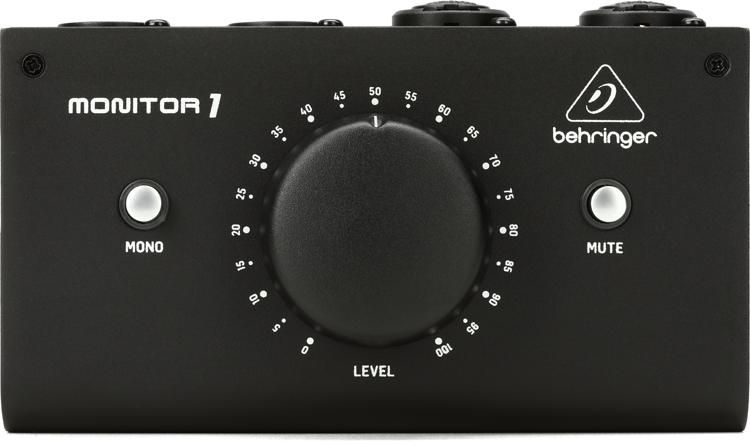
www.sweetwater.com

